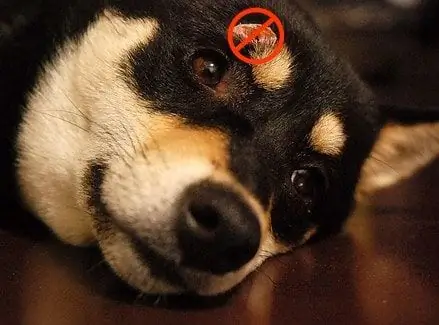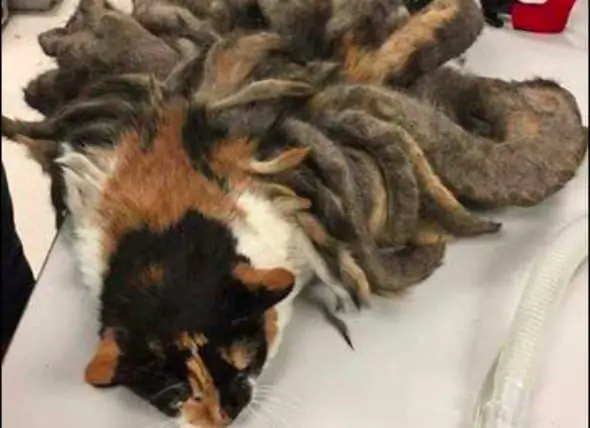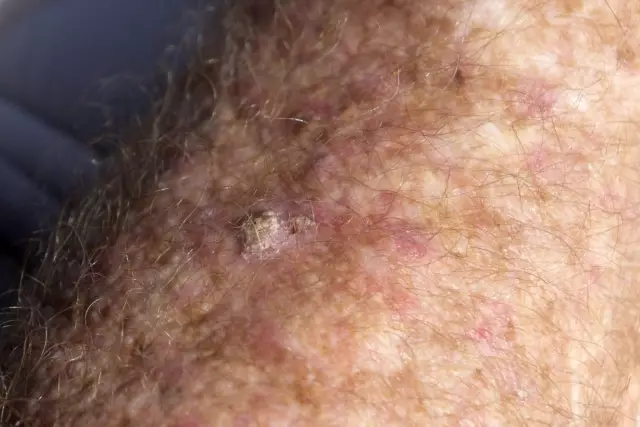
- Autor Daisy Haig [email protected].
- Public 2023-12-17 03:14.
- E modifikuara e fundit 2025-01-24 12:42.
Të dy bulldogët e mi francezë kanë vuajtur nga tumore të shëmtuara, shpesh kruajtëse dhe teknikisht beninje, të cilat ne i quajmë histiocitoma. Megjithëse histiocitomat zakonisht zhduken pas dy ose tre muajsh, pasiguria e prejardhjes së këtij tumori i bën shumicën e veterinerëve ta heqin atë (ose të paktën një pjesë të tij) për të siguruar mirëdashjen e tij.
Një bisturi kirurgjikale e një mase “beninje” mund të tingëllojë ekstreme për ju, por meqenëse histiocitomat mund të jenë të bezdisshme dhe të frikshme, shpesh tregohet operacioni.
E bezdisshme: Për shkak se ato shpesh shfaqen në kokë dhe këmbë, vende ku një masë e përsosur e rrumbullakët, e ulçeruar mund të gërvishtet ose lëpijë lehtësisht.
E frikshme: Për shkak se është e vështirë të thuash nëse ajo që sapo u shfaq në lëkurën e qenit tuaj (dhe zakonisht ndodh shpejt) është një tumor i keqe i qelizave direk (ose ndonjë masë tjetër e tillë monstër)… ose kushëriri i tij më i lehtë, histiocitoma.
E frikshme: Për shkak se është e vështirë të thuash nëse ajo që sapo u shfaq në lëkurën e qenit tuaj (dhe zakonisht ndodh shpejt) është një tumor i keqe i qelizave direk (ose ndonjë masë tjetër e tillë monstër)… ose kushëriri i tij më i lehtë, histiocitoma.
while young dogs (under three years of age) are more likely to get these, they can happen to dogs of any age. indeed, my older frenchie, sophie sue got one about a year ago. she was nine-not exactly a spring chicken. vincent has had three. and he’s not yet two years old.
some breeds are more predisposed. labrador retrievers and boxers, for example. though frenchies aren’t on the list, perhaps they should be… (perhaps they should be on the list for almost everything if my recent round of healthcare scares is any guide.)
ugly and prominently placed as they typically are, most owners want histiocytomas removed. some vets, however, will counsel owners to either wait a few weeks (especially if the dog is young and statistically less likely to be suffering from a malignant mass) or to have a simple section of it snipped (with a local anesthetic) for histopathological analysis at the pathology lab.
other vets will even take a needle poke at it, though most pathologists find that histiocytomas are not easily disgnosed definitively through this method (cytology).
if the dog is older or the mass is especially annoying to the dog or owner, however, we remove the whole sucker and clean up the mess quickly. unfortunately, though, this approach is more costly and usually requires general anesthesia. it’s nonetheless the approach i take for more than half of these tumors…better to be safe than sorry, right?
still, most owners need to know they have a choice. the nervous nellies among you (like me) are less likely to want to stare at a mass for a couple of months to see if it simply goes away. the rational or more anesthetically cautious, however, are justified in waiting-as long as their dog is young and/or hasn’t suffered from malignant masses in the past.
whatever choice you make, consider histiocytomas an excellent foray into the world of skin tumors. it’s like a warm-up for what’s likely to come as your dog ages. and it’s not all bad. look on the bright side: curing cancer is sometimes just a scalpel slice away.
Recommended:
Macja Topolake Polydactyl Që Kërkon Shtëpinë Bëhet Një Ndjesi Virale

Një mace polydactyl po bën bujë në internet me personalitetin e tij të çuditshëm dhe listën e tij të kërkesave shumë specifike
Macja E Shpëtuar Me Gëzof Të Gërryer Keq Merr Një Pamje Të Re Dhe Një Shtëpi Të Re

Në një histori që shërben si një kujtesë për të mbajtur vëmendjen për të moshuarit dhe kafshët shtëpiake të tyre: një mace e matur keq u gjet në rezidencën e saj në Pensilvani në mes të dhjetorit pasi pronari i saj do të vendosej në një shtëpi pleqsh. Macja 14-vjeçare
Qiejtë Miqësorë' Jo Aq Miqësorë Për Kafshët Shtëpiake

Njerëzit duket se po fluturojnë për më pak para se kurrë këto ditë. Dhe edhe pse mund të tarifoheni shtesë për një meze të lehtë, një pije ose duke kontrolluar bagazhet në fluturimin tuaj (janë bërë bisedime për të ngarkuar madje edhe për përdorimin e dhomave të banjës), të paktën është e mundur të bëni një largim të shpejtë me çmim të ulët. Fatkeqësisht, e njëjta gjë mund të
Hemangiosarcoma Ose Tumori Beninj - Trajtimi I Kafshës Suaj Për Tumoret E Kancerit

Kur nuk ka asnjë mënyrë për të ditur nëse tumori i kafshës suaj është beninj ose malinj, si vendosni nëse lejoni ose jo trajtim mjekësor për tumorin?
Alternativa Antibiotike Në Teori Dhe Në Praktikë (dhe Pesë Opsione Miqësore Për Kafshët Shtëpiake)

Easyshtë e lehtë të harrosh se antibiotikët kanë qenë zyrtarisht në përdorim për më pak se njëqind vjet. Dua të them, çfarë kemi bërë ndonjëherë pa këto ilaçe që vrasin bakteret? Unë përshkruaj antibiotikë çdo ditë të jetës sime në praktikën veterinare. Që do të thotë se i nderoj pë
